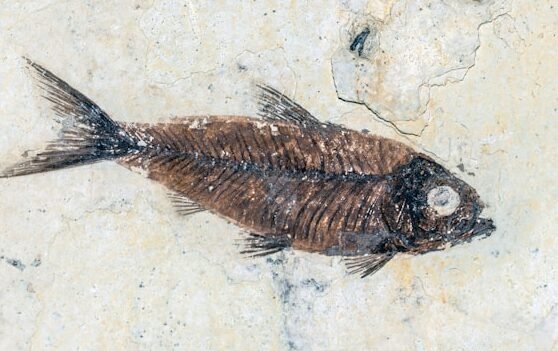Scientists unearth a perfectly preserved prehistoric fish—its last meal and a parasite still intact
In the blistering heat of the Australian desert, scientists have uncovered a haunting relic of the past—a 15-million-year-old fish, frozen in time with its final meal still in its stomach. The extraordinary fossil, unearthed from McGraths Flat, a renowned fossil site in New South Wales, offers a rare glimpse into a long-extinct world where this ancient creature met an untimely fate, its remains locked in iron-rich rock for millennia.
Palaeontologists, led by Matthew McCurry of the Australian Museum Research Institute, have named the newly discovered species Ferruaspis brocksi. So remarkably well-preserved is this prehistoric fish that even the pigment patterns on its skin are still visible. Scientists could determine not only what it looked like but also its diet—an eerie revelation made possible by the undigested remains found inside its stomach.
A Gruesome Death, Perfectly Preserved
Fossilisation is a rare process, and the preservation of soft tissue is almost unheard of. Yet McGraths Flat, a Lagerstätte fossil site, has produced an astonishingly intact specimen. This ancient fish, belonging to the freshwater smelt family, was found with its last meal—tiny insect wings and a partial bivalve shell—still lodged in its gut, as if it had died mid-swallow. But the nightmare doesn’t end there.
A closer examination revealed an unwelcome hitchhiker: a parasitic juvenile freshwater mussel, or glochidium, latched onto the fish’s tail. This parasitic creature would have fed off its host, sucking nutrients as it clung on for survival. Even in death, the fish remained an unwilling host, its body preserving a tale of prehistoric struggle.
Embed from Getty ImagesA Dark and Striped Survivor
Using high-powered microscopes, researchers identified subcellular structures called melanosomes in the fish’s skin. These tiny structures, responsible for pigmentation, revealed that Ferruaspis brocksi was darker on its dorsal side and lighter on its belly—an evolutionary adaptation known as countershading, designed to help it evade predators. Two dark stripes ran along its body, marking the long-lost species with a distinctive appearance.
Palaeontologist Michael Frese of the University of Canberra and CSIRO was astounded by the discovery. “Fossilised melanosomes have previously helped reconstruct the colour of ancient feathers, but never before have they been used to map the colour patterns of a long-extinct fish,” he explained.
A Prehistoric Rainforest Lost to Time
The fossils found at McGraths Flat date back between 11 and 16 million years, when the region was not the barren grassland it is today but a lush, temperate rainforest teeming with life. Alongside Ferruaspis brocksi, scientists have uncovered a ‘giant’ trapdoor spider, preserved plant life, and even an ancient bird feather waiting to be formally classified.
“The fossils from this site offer a window into a time when Australia’s ecosystems were vastly different,” McCurry said. “They provide crucial evidence of how species evolved and interacted in ancient freshwater environments.”
With each new discovery, McGraths Flat is rewriting Australia’s prehistoric history. This latest revelation—a fish caught mid-meal, doomed to carry a parasite for eternity—cements the fossil site as one of the most astonishing scientific finds of our time.
